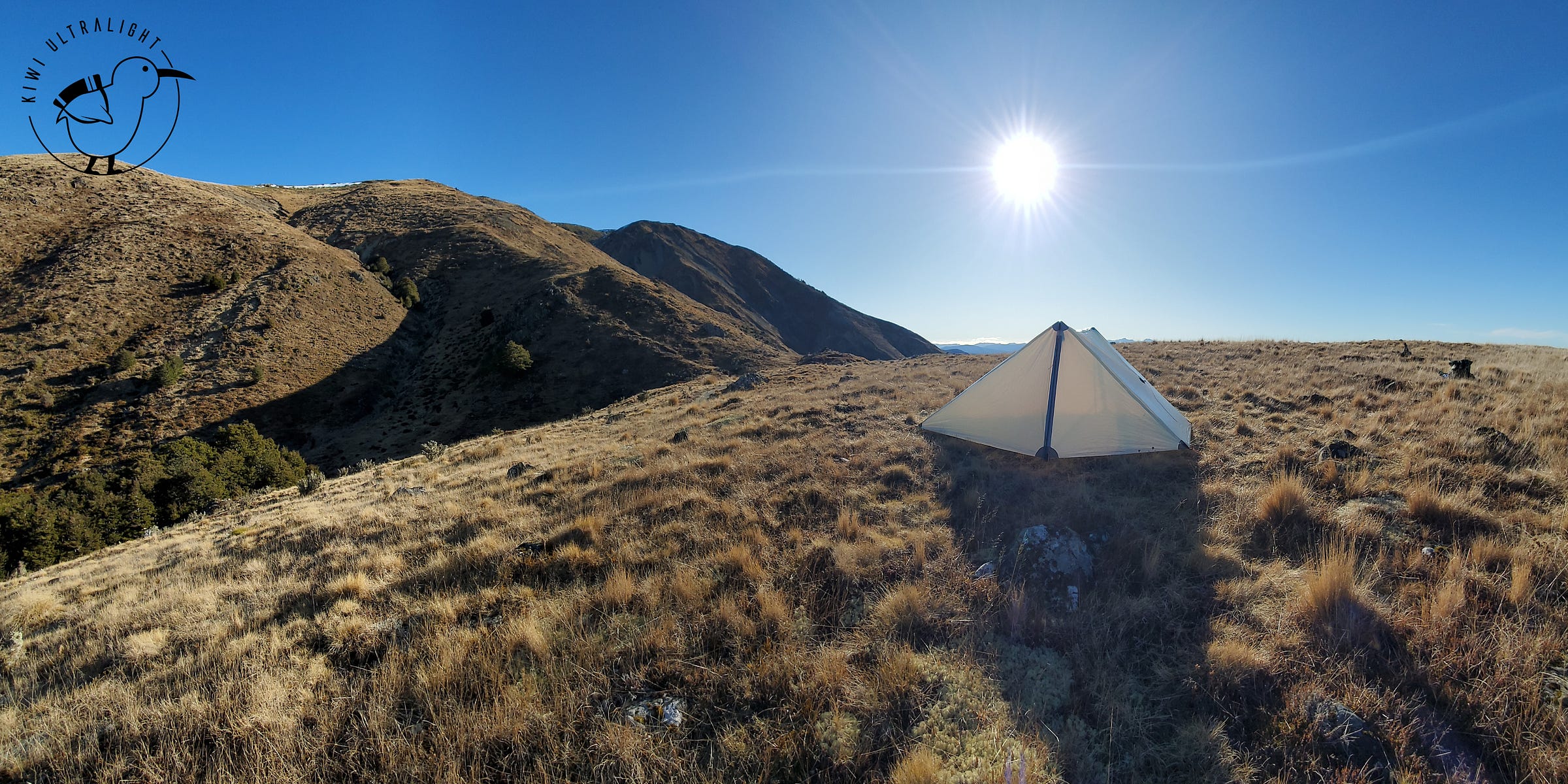In just a couple of days, we’ll announce full details of the upcoming New Zealand-made ultralight tent line by Kiwi Ultralight.
As an entree to the release you’re waiting for, we wanted to share our excitement about the fabrics chosen during the testing phase. Fabrics are a cornerstone of good gear design, and we needed to be certain we were delivering a premium product before making the announcement - but that time has come!
We’re stoked to announce our rain fly will use the cutting-edge laminate produced by Challenge Sailcloth called “UltraTNT”! This results in an ultralight fly that doesn’t tear, won’t absorb water or sag, has a waterproof rating of 140,000mm (yes really, that’s 50- to 100-fold more than traditional tent fabrics), and is both cheaper and more wear-resistant than the Dyneema/DCF alternatives.
What is UltraTNT?
UltraTNT is made by laminating ultra-high molecular weight polyethylene (UHMWPE) fibers at 0, 45, and -45 degrees between mylar sheets. This leads to a fabric that is dimensionally stable even in wet conditions, it won’t sag or stretch in rain or over time. You can see the similarity to fabrics used in modern racing sails. As mentioned above, this relatively thick mylar provides a higher waterproof rating than any other tent fabric on the market at 140,000 mm or 200 psi.
The result of these design features is an incredibly tight pitch on your tent which will last as long as you take care of it. In addition to its waterproofing, the fabric does not tear and is hard-wearing against all types of damage except pinpricks (more on that shortly). Instead of being sewn, UltraTNT uses a unique seam bonding tape that’s fully waterproof and durable. Tie-outs and peaks are all reinforced with ULTRA100, an Ultra-PE blended fabric with high-tenacity polyester bonded to the UltraTNT. You may have seen this fabric used in ultralight packs from other companies.
The most obvious comparison is the popular laminate DCF. While slightly lighter than UltraTNT, DCF is known for being weak to abrasion, prone to stretching over time, and being incredibly expensive and hard to source. UltraTNT outperforms DCF in all these categories. The other alternative we considered was Sil-Poly. While our much-used early designs were primarily made from Sil-Poly, this fabric has problems with sag and water absorption leading to a heavier tent after it rains. UltraTNT represents a middle ground in both pricing and weight between these two main alternatives.
Ultimately, we chose to use this new fabric because we believe it will make a better, longer-lasting tent, that’s well-suited for the New Zealand environment and can be produced in New Zealand at a price customers will find competitive with their other options.
The UltraTNT tradeoff
The one weakness of this fabric is puncture damage. For this reason, we’ve used an ultralight, puncture-resistant alternative for the floor of the tent (discussed below).
If you take care of your tent, you shouldn’t have any issues. This means folding rather than stuffing it into its storage bag, not walking on it, and carrying it inside your pack rather than outside (something you will find quite easy given the small pack size of the tent). You don’t need to be overly anxious about random punctures while pitching on tussocks or other rough surfaces, it is quite hardy, just treat it like the high-performance gear it is.
Luckily, on the off chance you do puncture the fly, UltraTNT is very easy and cheap to fix, even out in the bush. Every tent will come with transparent repair strips, which when placed on either side of the damage, will be just as waterproof as the seams. A quick, light, and easy repair.
Floor Fabric: 1.1 oz Silpoly PU4000
This fabric has a waterproof rating of 4000 mm with very low water absorption thanks to the multipass-PU coating. It’s more durable than both UltraTNT and DCF alternatives and matches well with the UltraTNT fly since it can also be seam-taped. Additionally, it’s less slippery than the laminates, all of this at a lower cost and only slightly higher weight than the laminate alternatives (DCF floors are made with 1.0 oz fabric, for example).
This is our go-to floor fabric used in all the tents we’ve made over the years.
Bug Mesh: 0.67 oz Noseeum
The final component may be the least exciting, but rest assured we put as much into selecting and testing it as we have with the other fabrics. This specific weight mesh is a perfect balance of light and firm which reduces sag and does exactly what you expect it to do - keep the sandflies and mosquitos out. It’s more rip-resistant and longer lasting than other ultralight alternatives.
What’s not to love?!
In the next newsletter, we’ll really focus on the 1-person tent - full details, specs, features, price, and information on how to purchase. Make sure you don’t miss it!
If you haven’t already, make sure to subscribe to this newsletter by clicking the button:







